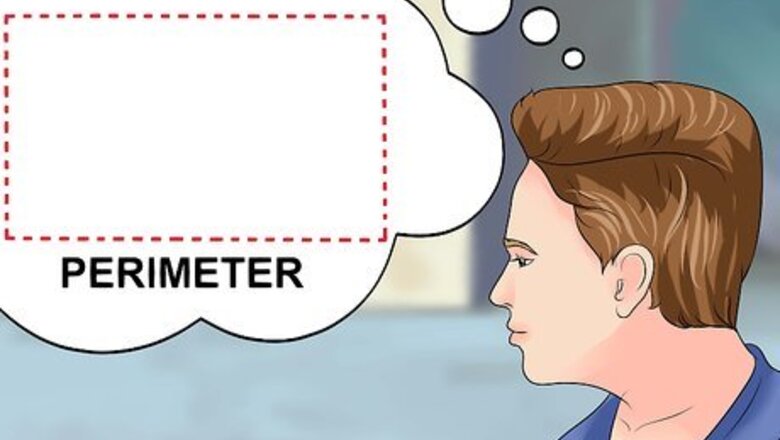
views
X
Research source
The area and perimeter are extremely useful measurements that can be used in household projects, construction, DIY projects, and in the estimation of materials you might use.[2]
X
Research source
For example, the simple act of painting a room requires knowing how much paint you will need or, in other words, how much area the paint will cover. The same can be said when plotting a garden, building a fence, or doing various other chores at home.[3]
X
Research source
In these situations, you can use area and perimeter to save time and money when purchasing materials.
Finding Perimeter
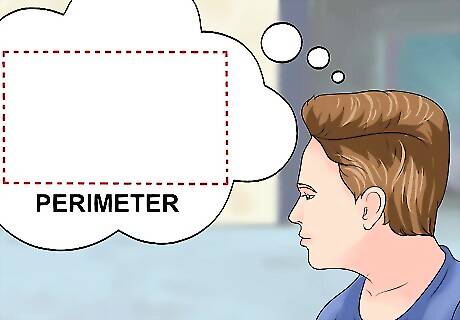
Determine the shape you want to measure. Perimeter is the outside boundary around a closed geometric figure, and different shapes will require different approaches. If the shape that you want to find the perimeter of is not a closed shape, the perimeter cannot be taken. If this is the first time you are calculating perimeter, try a rectangle or a square. These regular shapes will make finding the perimeter easier.
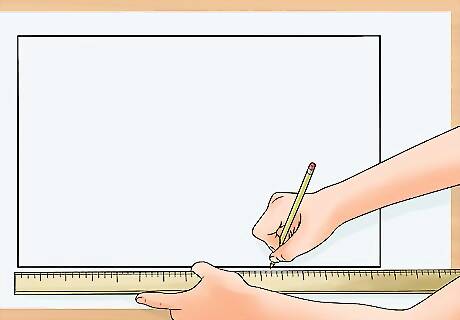
Draw a rectangle on a piece of paper. You will use this rectangle as a practice shape and will find its perimeter. Make sure that the opposite sides of your rectangle are the same length.
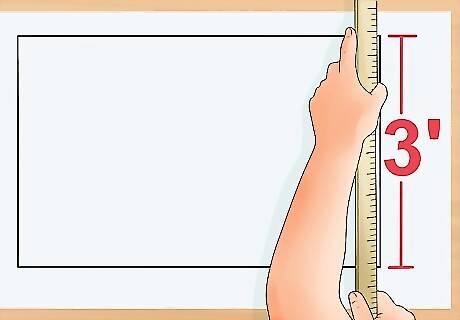
Find the length of one side of your rectangle. You can do this with a ruler, measuring tape, or by making up your own example. Write down this number by the side it represents so you don't forget its length. As a guided example, imagine that the length of one side of your rectangle is 3 feet. For small shapes you may want to use centimeters or inches, while feet, meters or miles will work better for larger perimeters. Since the opposite sides of rectangles are equal, you will only have to measure one of each set of opposing sides.
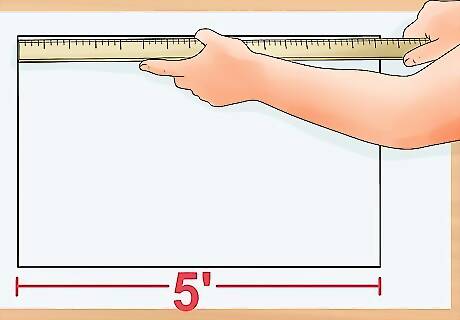
Find the width of one side of your rectangle. You can measure the width with a ruler, measuring tape, or by creating your own example. Write down the value for your width next to the horizontal side of your rectangle it represents. Continuing with the guided example, imagine that in addition to a length of 3 feet, that the width of your rectangle is 5 feet.
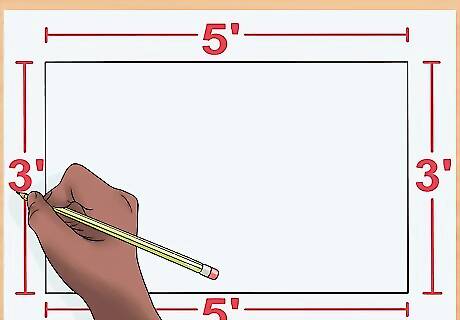
Write down the correct measurements on the opposing sides of your rectangle. Rectangles have four sides, but the length of opposite sides will be the same. This is also true for your rectangle's width. Add the length and width used in the guided example (3 feet and 5 feet respectively) to the opposite sides of your rectangle.
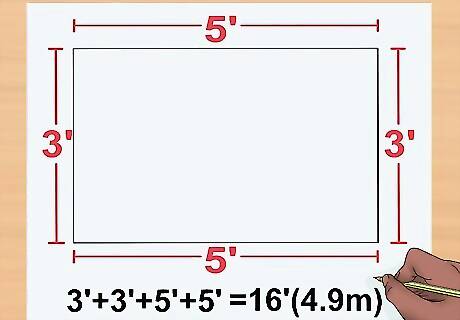
Add all your sides together. One a piece of scratch paper, or on the paper you have written the guided example, write: length + length + width + width. So, for the guided example, you would add 3 + 3 + 5 + 5 to get a perimeter of 16 feet (4.9 m). You can also use the formula 2(length + width) for rectangles, since the length and width values are doubled. In our example you would multiply 2 by 8 to get 16 feet (4.9 m).
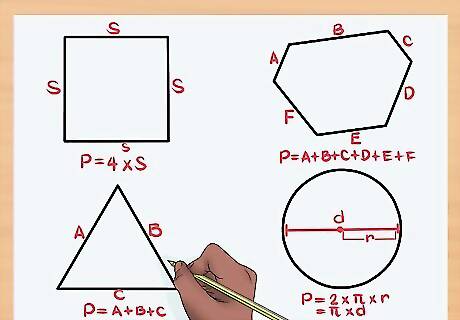
Adjust your approach for different shapes. Unfortunately, different shapes will require different formula for you to solve for perimeter. In real life examples, you can measure the outside boundary of any closed geometric shape to find its perimeter measurement. But you can also use the following formulas to find the perimeters of other common shapes: Square: length of any side x 4 Triangle: side 1 + side 2 + side 3 Irregular polygon: add all sides Circle: 2 x π x radius OR π x diameter. The π symbol stands for Pi (pronounced like pie). If you have a π key on your calculator, you can use it to be more accurate when using this formula. If not, you can approximate the value of π as 3.14. The term "radius" refers to the distance between the center of a circle and its outside boundary (perimeter), while "diameter" refers to the length between any two opposite points on the perimeter of a circle that pass through the circle's center.
Finding Area
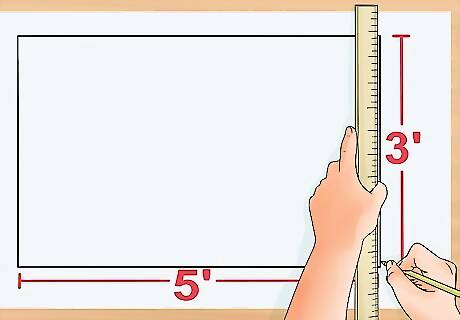
Determine the dimensions of your shape. Draw a rectangle or use the same rectangle you drew while finding perimeter. In this guided example, you will be using the height and the width of your rectangle to find the area. You can use a ruler, measuring tape, or come up with your own example. For the purposes of this guided example, the length and width will be the same as the previous example used to find perimeter: 3 and 5, respectively.
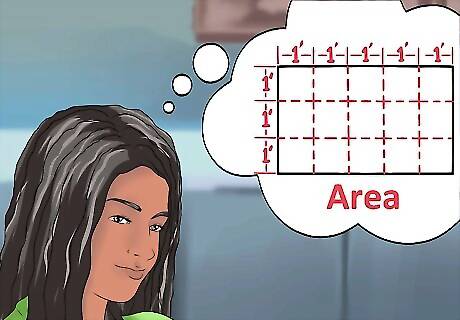
Understand the true meaning of area. The area is all of the surface inside the perimeter of your shape. The area can be smaller or larger than the perimeter depending on the shape. You can divide your diagram into one-unit (feet, cm, miles) segments vertically and horizontally if you want to visualize how the area measurement will look.
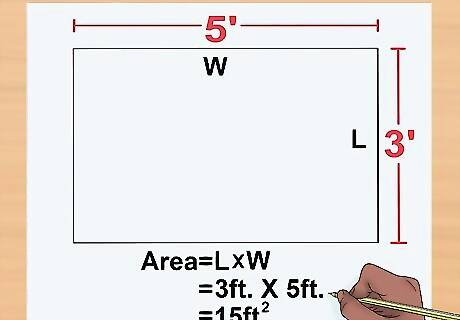
Multiply the length of your rectangle by the width. For the guided example, you will multiply 3 by 5 to get an area of 15 square feet. The unit of measure for area should always be written in square units (square miles, square yards, etc.). You can write the "square units/units squared" notation shorthand as: Feet²/ft² Miles²/mi² Kilometers²/km²
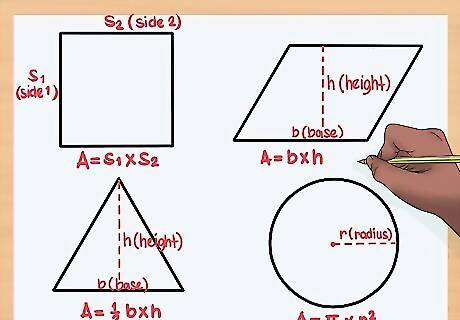
Change your formula according to shape. Unfortunately, different geometric shapes will require you to take a different approach to solve for area. You can use the following formulas for finding the area of some common shapes: Parallelogram: base x height Square: side 1 x side 2 Triangle: ½ x base x height. Some mathematicians use the notation: A=½bh. Circle: π x radius² The term "radius" refers to the distance between the center of a circle and its outside boundary (perimeter), and the raised two (referred to as the "squared" notation) indicates that the value being squared must be multiplied by itself.




















Comments
0 comment